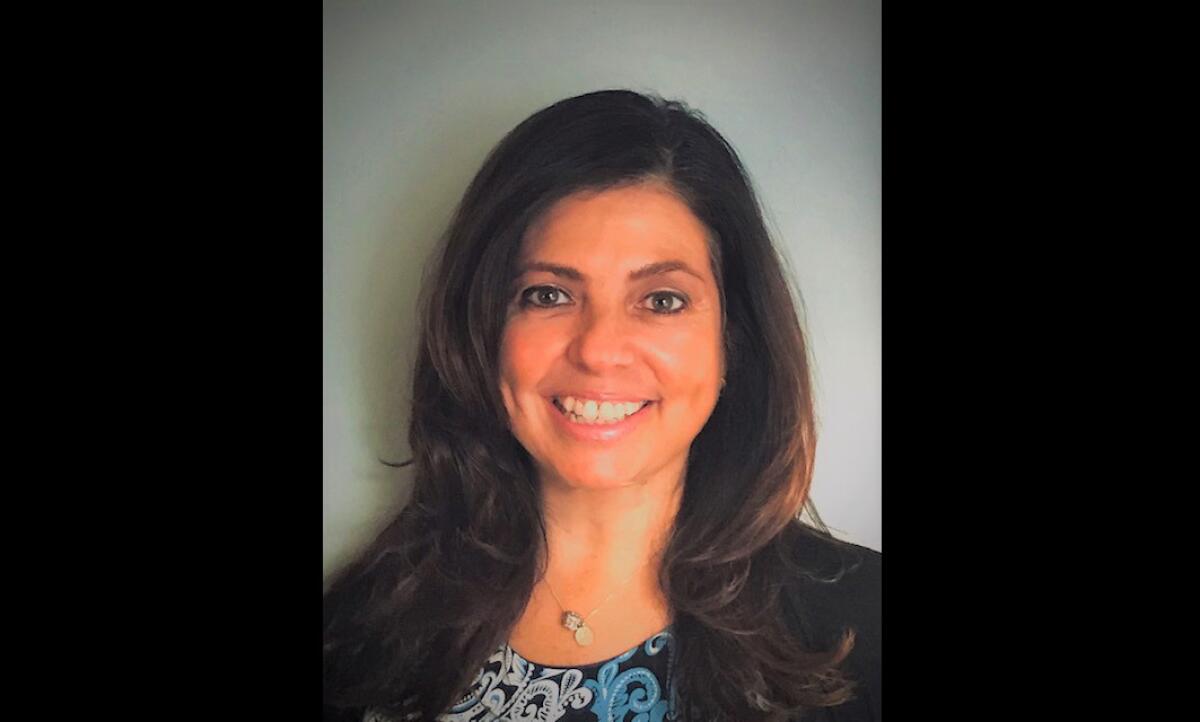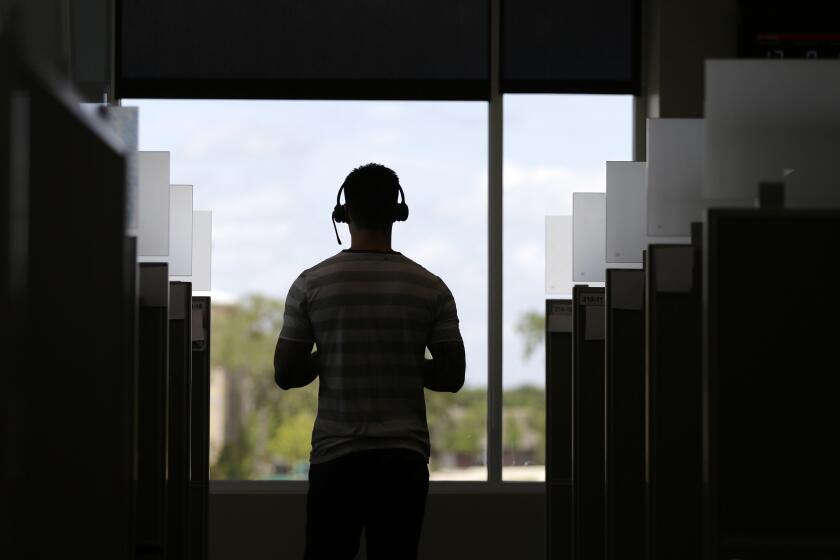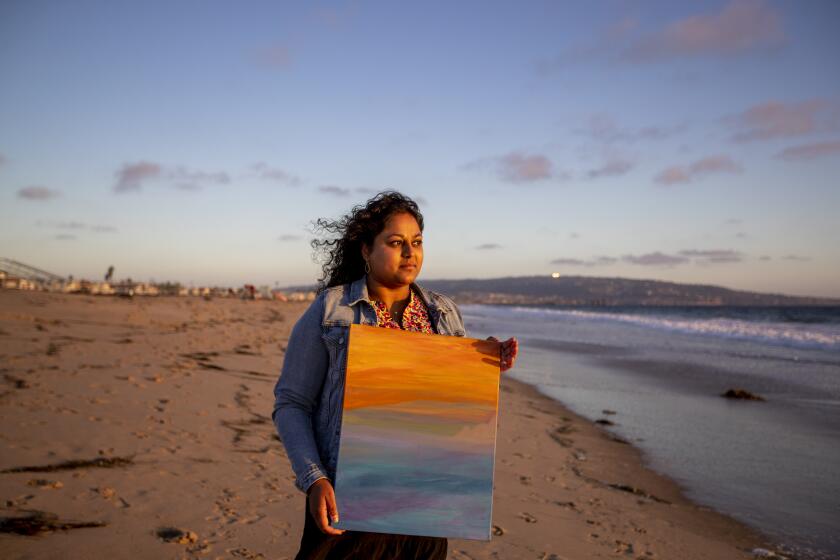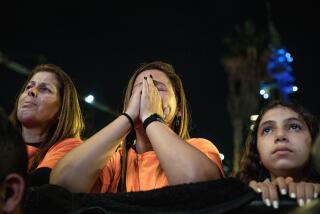Kids are suffering from toxic stress. Here’s some advice on how we can help them heal

- Share via
Stress and upheaval are harmful at any time, but the pandemic has forced many families onto a roller coaster ride that seems unending. Families and caregivers are concerned about what this period of great instability means for their children, so we turned to psychologist Jennifer Vargas Pemberton, who has worked with children and teenagers for decades, for some answers.
Pemberton is an associate professor of educational psychology and counseling in the Marriage and Family Therapy Program at Cal State Northridge and the faculty liaison for Strength United, the CSUN charter center that provides trauma services to the community and on campus. In addition, she has a private practice and is director of training and manager of the crisis program at the Child & Family Guidance Center’s Balboa Boulevard offices in Northridge.
Overall, Pemberton said she believes that families, schools and our communities should embrace a “trauma-informed” approach, which means having an understanding of traumatic experiences can impact our children’s overall wellbeing.
This interview has been edited and condensed for clarity.
You’ve been working with suicidal children and adolescents and specializing in community health, treatment of child abuse and trauma, and Latino mental health issues. What led you down this path?
I’m a first-generation Latina. My family emigrated from Costa Rica. My sister and I are the only ones born here, and our first language was Spanish. That’s part of what has motivated me to get involved in the Latino community — to provide services needed for an underserved community.
I got my bachelor’s degree at UCLA in psychology, which fueled my interest in mental health. I went to USC for a master’s in marriage and family counseling and a PhD in counseling psychology.
How To Save A Life
Pandemic stress, traumatic events and economic uncertainty have upended our world. This series aims to make the cascade of threats to your mental health a little easier to manage.
Field work and internships were part of my doctoral journey, and the first one was Project JADE (Juvenile Assistance Diversion Effort) in South Gate. That program was for adolescents who were arrested, and a lot of the clients were risk-taking. Rather than funneling them through the prison system, they would go through this program.
My next internship was at the Child and Family Guidance Center [in Northridge] where I work now. I went there for field work. I started in trauma, and I knew it was the right fit for me. … I’ve been doing that for 25, 30 years, and when you work with trauma you see there are other issues like PTSD and depression, anxiety and substance abuse.
Members of the medical community sometimes refer to adverse childhood experiences (ACES) scores when they are evaluating children. Can you please explain that?
Kaiser [and the U.S. Centers for Disease Control and Prevention] did this study on adverse childhood experiences. There are 10 different categories [of adverse experiences], and the higher the score the more it’s associated with negative physical and mental health outcomes.
Before that there was not this connection with trauma and health.
Bea and Edward Stricklan’s son has been diagnosed with schizophrenia. The brain disorder is treatable, but accessing adequate treatment has been difficult, if not impossible.
Can you talk about children and toxic stress?
Toxic stress is that prolonged experience of [something] adverse, like abuse or neglect. Being exposed to parents who are substance abusers or mentally ill. Chronic exposure to traumatic experiences.
I take a trauma-informed approach. When people think about trauma, most of them think about feelings and emotions like sadness and depression. … A trauma-informed approach is much more holistic. [What’s] the impact [of trauma] on the brain? On [children’s] emotional development and regulation? [What’s] the impact on their cognition … on their physiological state? On their behavior? On their self-esteem?
Think about the pandemic. If, in 2018, we would have said to each other, “Imagine there’s a virus out there. Imagine there are millions of deaths. Imagine the whole world stops and everyone has to stay inside 24 hours a day. Hospitals are overwhelmed and overloaded.”
You would think you were describing a movie.
But that’s what happened to us. The trauma we experienced — especially for kids — is that our basic physiological safety was undermined. There were all these sudden deaths in families. A lot of kids lost their parents and grandparents and their extended family.
For underserved communities, the stay-at-home order was somewhat different. When you live with multiple families in a very enclosed space — maybe a one-bedroom apartment — if you already had anxiety or depression, it was feeding that. So, during the pandemic we saw more rates of depression, anxiety and stress.
If you had domestic violence in the home, that stay-at-home order meant you were in the home with a perpetrator and there was no escape... It was very scary for a lot of families.
How do children deal with grief?
For kids it can be very confusing.
Supporting anyone through the healing process, you want to start with validating and normalizing the feelings and then help them process the feelings related to the loss. Talk about the positive memories and redefining relationships.
Learning how to regulate emotionally is incredibly helpful, whether it is grief or any of the other mental health issues.
How can children be heard if they don’t have the vocabulary that’s necessary to address their own mental health?
Their behaviors speak louder than words. Their behaviors are the way kids communicate about what is going on with them. They [might] withdraw or be quiet, or be aggressive and hit someone. If they are teens, they [might] run away or abuse substances or cut themselves.
If agencies are taking a trauma-informed approach, they are looking at the person holistically, which includes their experiences and not just the symptoms.
If you are taking a trauma-informed approach in school, if you have kids who aren’t doing their homework or are aggressive, you aren’t going to look at that kid and say, “That’s a lazy kid.” Instead, you [ask] “What’s going on with this child?”
If a physician can understand there is this trauma, they will connect children with the appropriate mental health service.
The new 988 number is meant as an alternative to 911. But how does it work? And is it safe to call?
Do you think the rate and level of trauma are decreasing?
To a certain degree — absolutely. COVID is not gone, but we don’t have the stay-at-home order, and kids are going back to school and are getting socialization and getting outdoors. We are moving forward.
Are we completely healed and over it? Absolutely not.
Sometimes it seems as though our public health system doesn’t have the capacity to assist everyone who experienced trauma and psyche-ache during the pandemic. What other resources are available to children and families in marginalized communities?
The Department of Mental Health has many contracted agencies throughout the county. There are also centers that aren’t part of the department. There are centers that provide case management therapy, psychology hotlines assessment and psychiatric medication. Schools have therapists on campus.
There are bereavement centers like Our House Grief Support Center. Community churches and parks and rec centers in a community [can help]. If they can get kids together in a safe space, they are socializing and connecting with peers.
There is amazing stuff on YouTube like yoga and teaching kids how to play guitar — so many things that can involve kids in terms of music and art.
With getting kids to heal, we [need to] take a holistic approach including exercise, art, sleep hygiene — that is huge. Also, basic nutrition. There are some apps I give my clients and my students. …. Mindfulness Coach, PTSD coach, free apps created by the government.
Are you hopeful about finding more solutions to move forward, especially for children?
We know that as human beings we have this capacity for resilience and the capacity to heal, and we have to support each other in that framework. We know some of the strategies we can use in terms of coping. We can be culturally responsive. I am hopeful … otherwise there is no way I could be in this field.
We do see success stories. I absolutely believe in recovery and healing.
Rest is crucial after COVID-19, but the systems in this country don’t support mental health well or the physical health needs of folks who need it.
What can we as a culture … as a society … as a community … do to support our children? How can we help them heal?
As a community if we are trauma-informed and have compassion, that is one step forward versus a critical, judgmental “they should do better.”
Decreasing the shame and stigma of mental health is huge. If someone goes to a physician, there is no shame. If someone goes to a therapist and gets medication, there is a culture of shame. … We are starting to go in the direction of trying to normalize mental health.
We all need support and healing, and there are different ways of getting it. [We can] be more strength-based, believe in our own strength… give each other grace.
More to Read
Sign up for Essential California
The most important California stories and recommendations in your inbox every morning.
You may occasionally receive promotional content from the Los Angeles Times.















